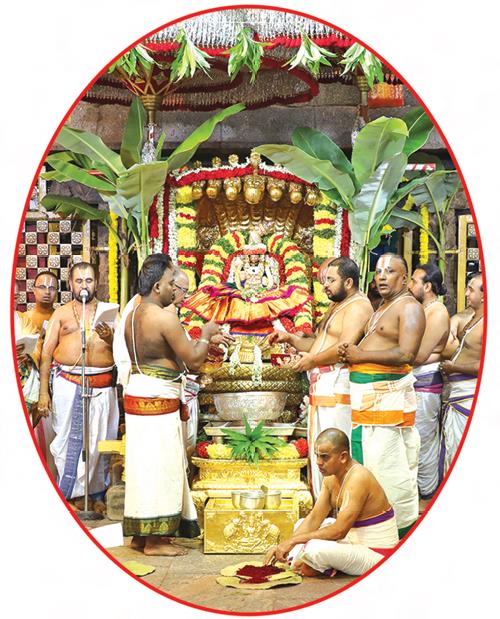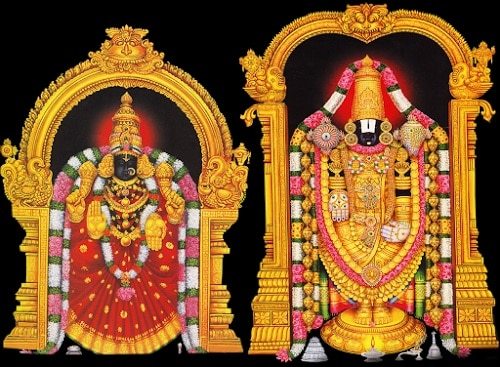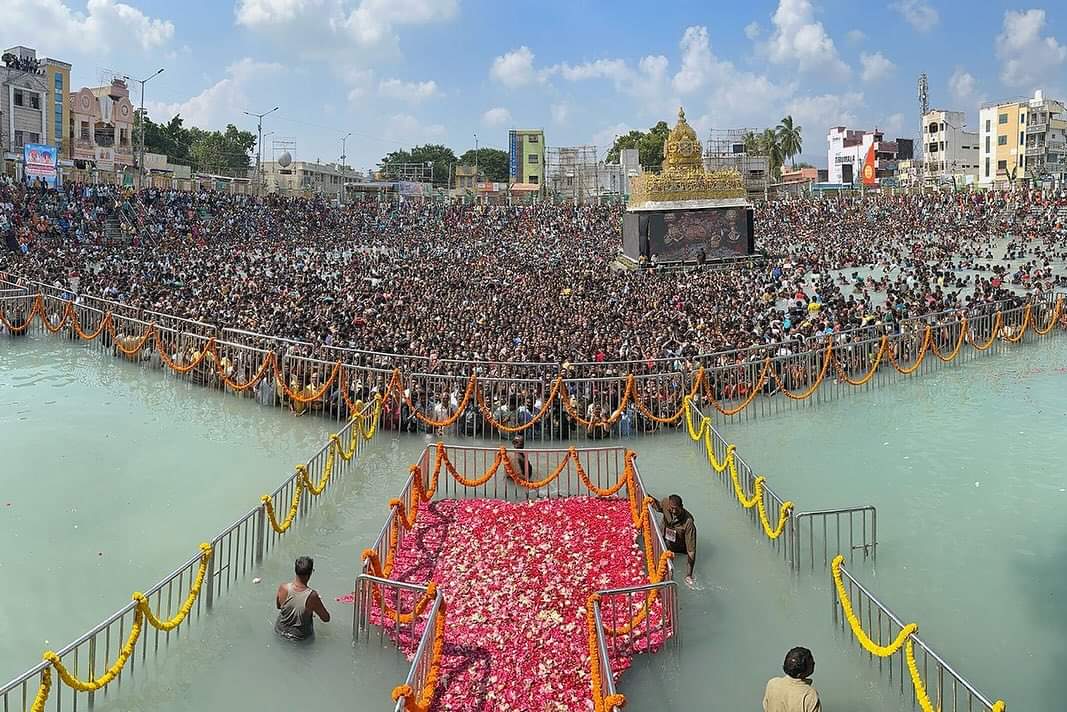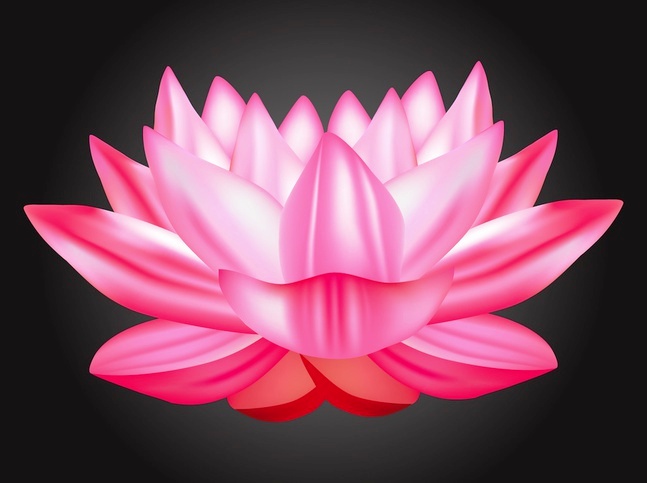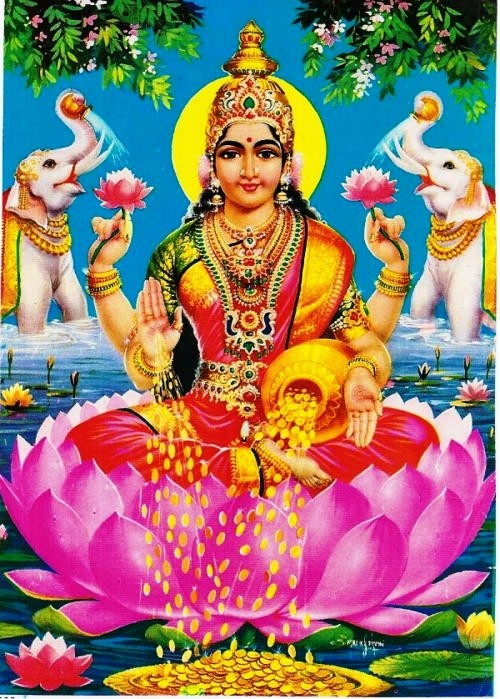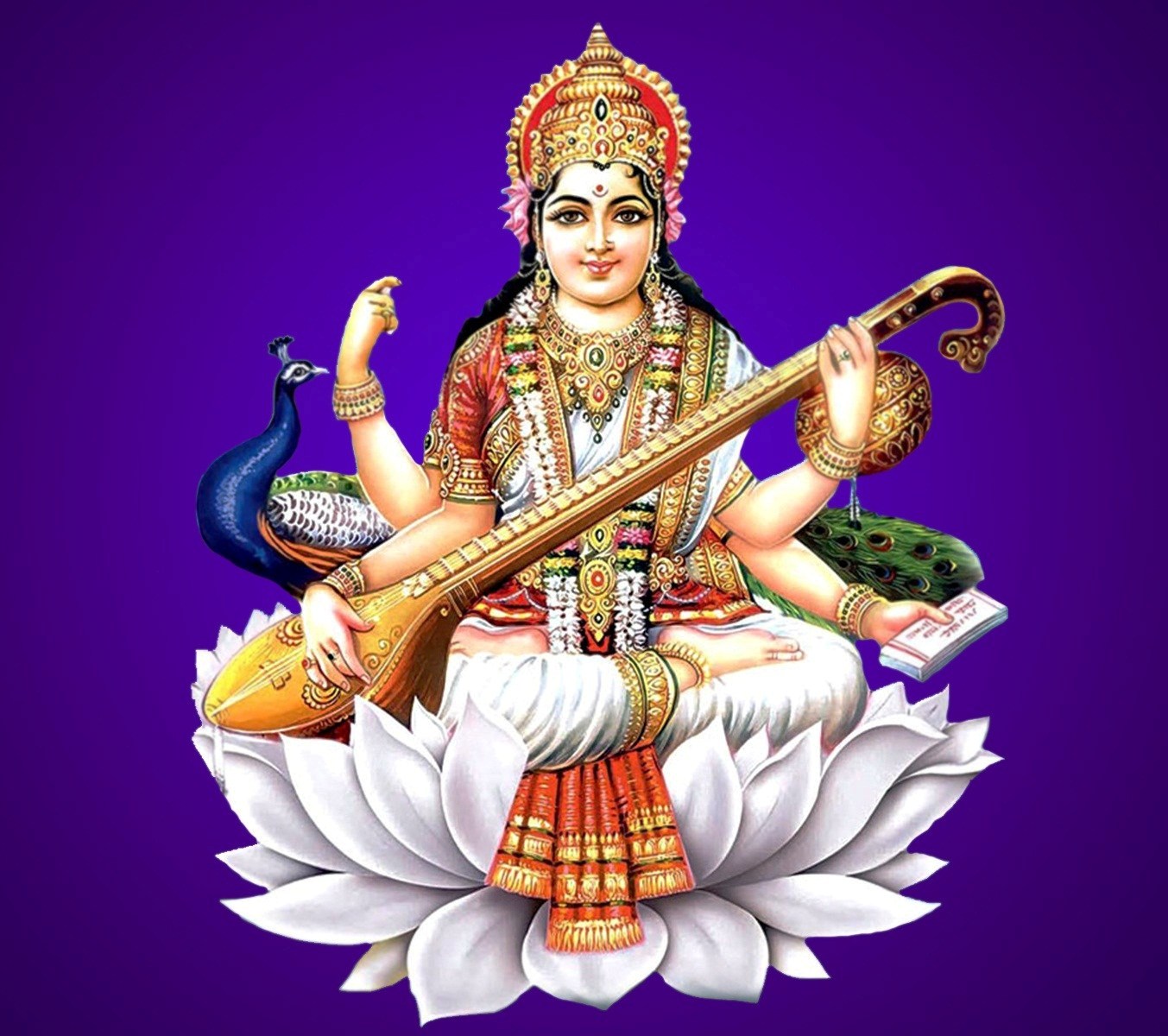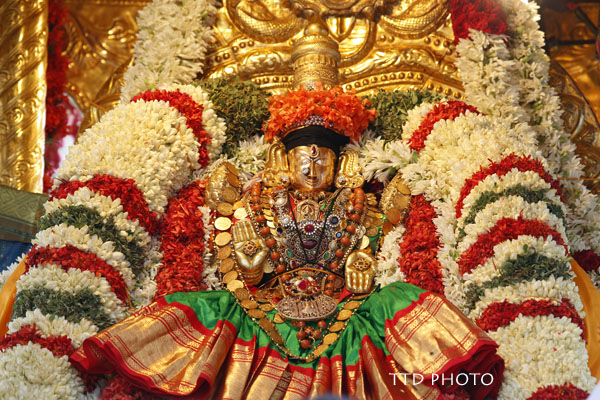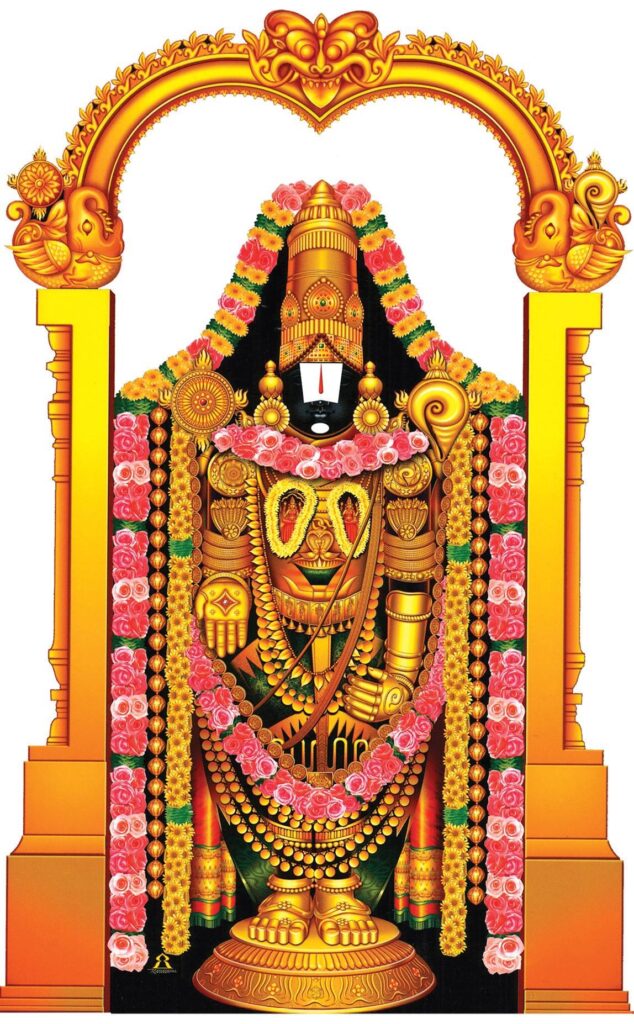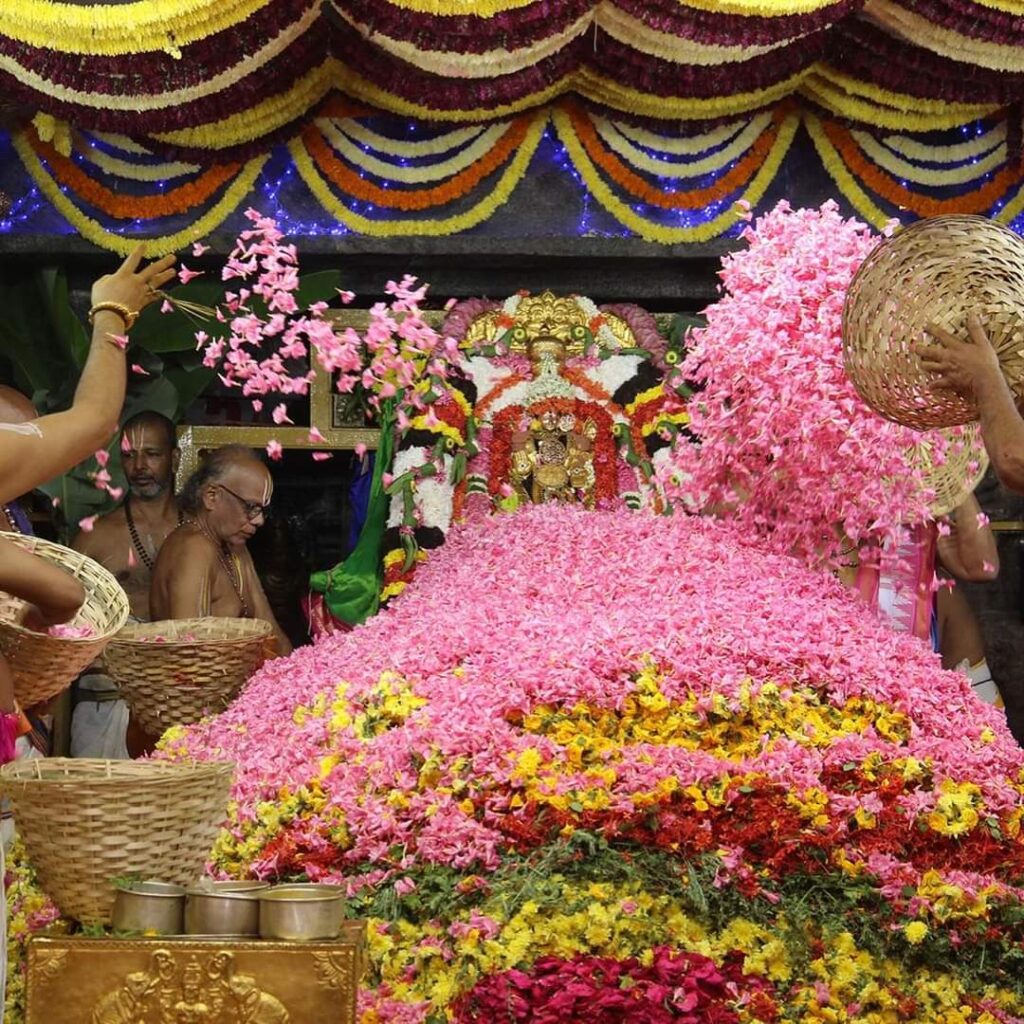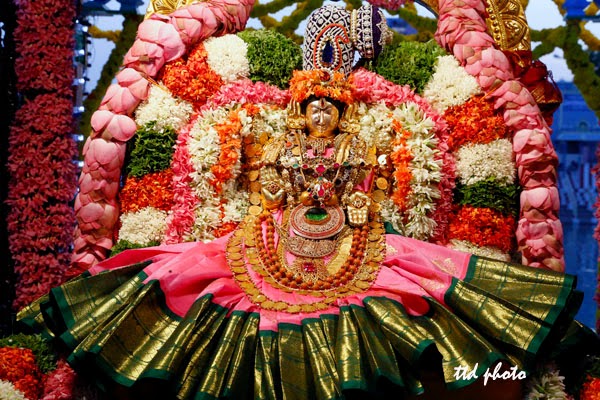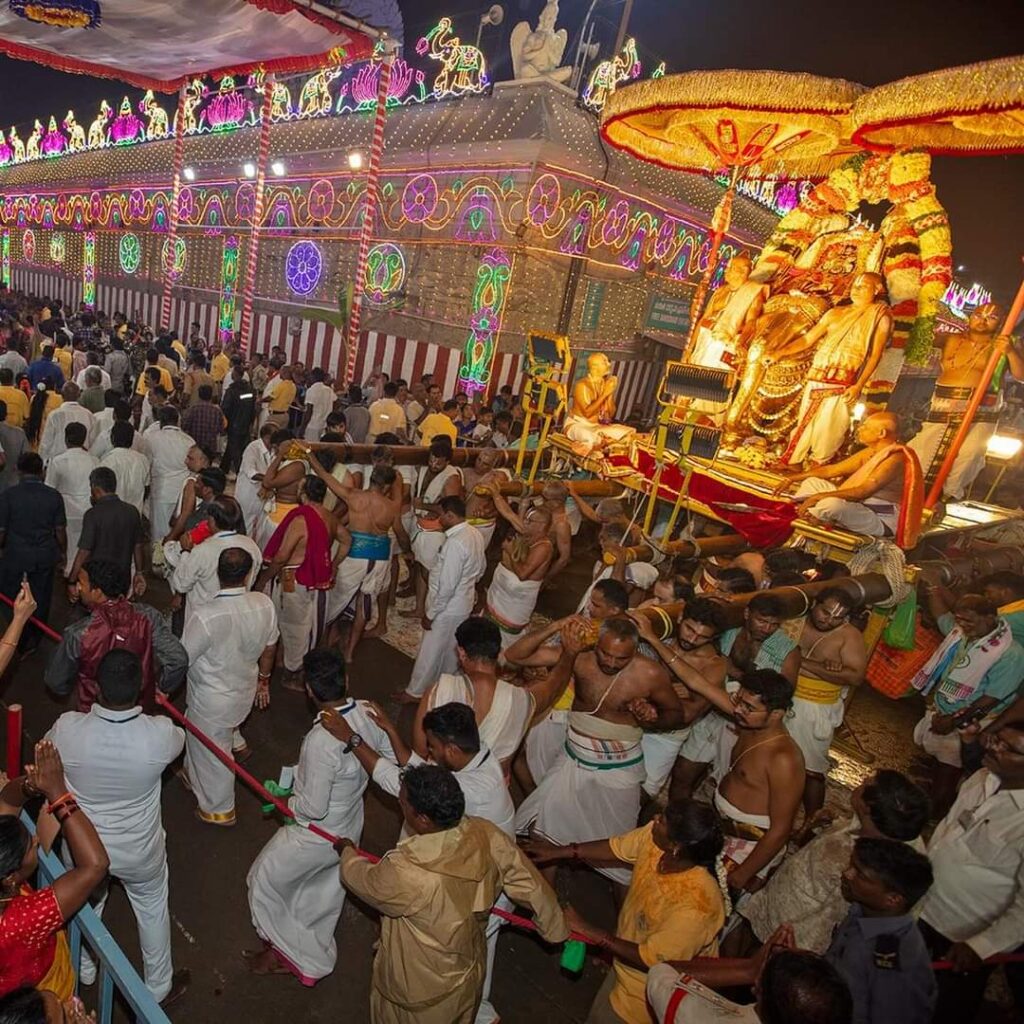Sri Padmavathi Devi temple – Tiruchanur
Goddess Padmavathi is the queen of Lord Srinivasa and enjoys a separate identity with equal status. The Goddess is inseparable and enjoys an equal position as she is a Purushakara or instrumental in protecting the devotees from the wrath of the Lord.
As the temple of Sri Padmavathi Ammavaru is as important as the Venkateswara Swami temple, pilgrims throng to this temple throughout the year and offer their prayers.
Laksha Kumkumarchana
According to the Hindu Sanatana Dharma, ‘Kumkum’ or vermilion is considered sacred, especially for married women, as it is applied by them over the forehead seeking the longevity of their husbands. It is also considered as the symbolic representation of Goddess Shakti, who is also revered as Goddess Lakshmi, Goddess Saraswathi, and Goddess Parvathi.
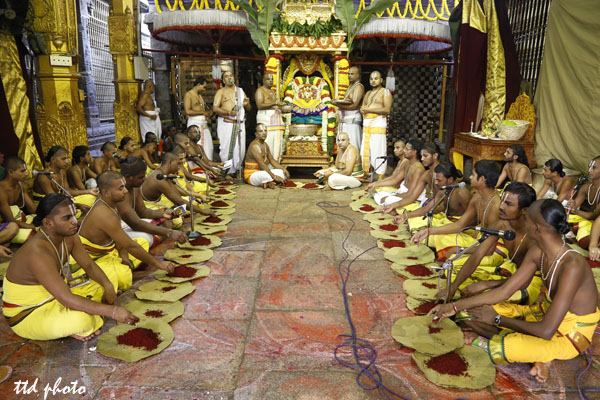
‘Laksha Kumkumarchana’ will be performed on a grand note at Sri Padmavathi Devi temple in Tiruchanur every year. This ritual is performed before the commencement of nine day ‘Karthika Brahmotsavams’.
So, before starting brahmotsavams or any mega religious event in a Hindu Goddess temple, the priests usually perform “Laksha Kumkumarchana” seeking the execution of the religious event smoothly and successfully by appeasing Mother Goddess with this unique ritual.
In the temple of Tiruchanoor, which happens to be the abode of Goddess Padmavathi Devi, the temple priests carried out “Laksha Kumkumarchana” from 7am till 12 noon to the processional deity of Goddess Padmavathi seated on a finely decked Asan in Mukha Mandapam located opposite Sri Krishna Swamy temple located within the main temple premises.
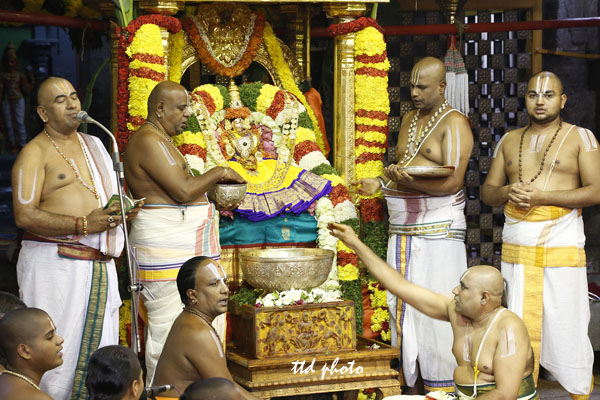
On this occasion, the processional deity of goddess Padmavathi will be seated on ‘Asan’ (platform) amidst the renditions of sacred chants and mellifluous hymns. The priests will chant the 1000 divine names of Goddesses during this fete.
The priests recited “Lakshmi Astottaram”, and “Lakshmi Sahasranamam” several hundred times and carried out “Laksha Kumkumarchana” with devotional fervour. Whenever they were reciting the multiple names of the Goddess, archana was done with vermilion to the processional deity. Hundreds of women devotees took part in this special ritual.
This ritual is considered as a prelude to Brahmotsavams appeasing Goddess for the successful conduct of mega Brahmotsavam.
